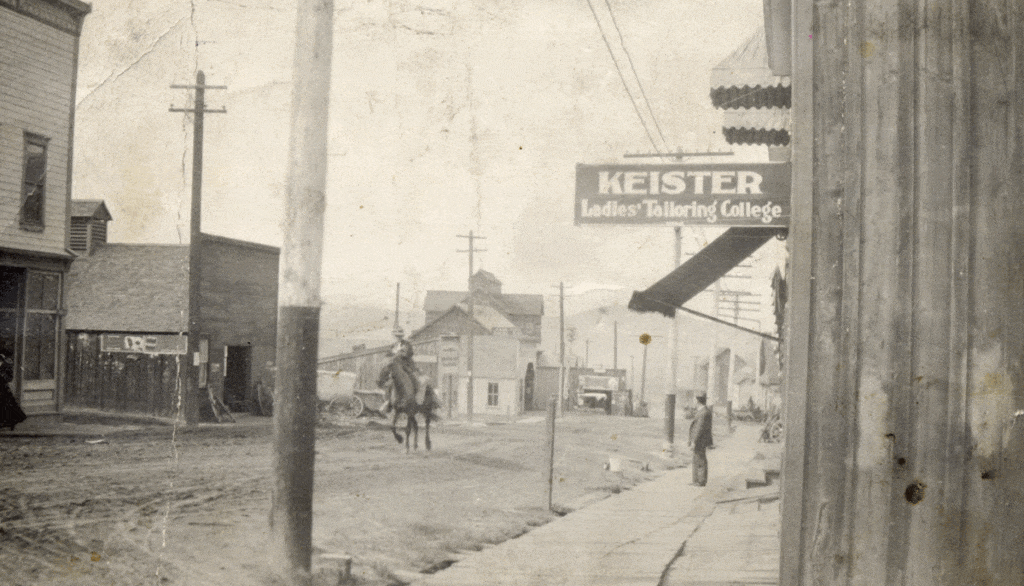The Industrial Revolution produced new technologies that rapidly changed everyday lives in the Victorian and Edwardian eras. Inventions like the telephone, typewriter and cash register created new types of jobs, often filled by women. In the fashion industry, sewing machines in particular provided opportunities for women to join the workforce in factories or as independent dressmakers and tailors. The Keister Ladies’ Tailoring College, founded in 1891 by J.A. Keister of St. Louis, gave women the opportunity to learn a trade which provided a respectable income and perhaps some independence. It was known as “the school that turns out dressmakers.”[1]
The Keister College advertised the benefits of its classes for both homemakers wanting to make their own clothing and women looking for a career in dressmaking. A full course at the school taught all aspects of dressmaking, including taking measurements, pattern drafting and cutting according to the Keister system, and best practices in sewing and tailoring.[2] The system was simple and heavily relied on the drafting square, “a patented instrument for obtaining accurate measurement in the process of fitting a garment.”[3]
By 1915, the Keister school system was the largest in the country, with 500 branches and 40,000 graduates.[4] The Salt Lake Telegram noted “fifteen schools teaching the system in Utah and Idaho, twelve graduate students teaching Keister sewing in the state schools and six who operate their own schools.”[5] The first Keister branch in Utah was established by Joseph E. Wilson in 1904 in Logan. Other branches included Salt Lake City, Cedar City and Ogden.
In 1909, the Park Record announced that a Keister branch was coming to Park City. It opened on Tuesday, April 20, 1909. The location was advertised as well-lit, roomy and convenient, right on Main Street. Mr. Wilson acted as the manager and supervised drafting[6] while his wife, Lerona, a graduate of the College in Denver, was the expert in cutting and ladies’ tailoring.

Credit: Park City Historical Society & Museum, PCHS Photograph Collection
Popular with high school girls and young, unmarried women, Keister colleges were successful throughout the state. Various Utah newspapers advertised a “large and growing demand for first class cutters,” with “good positions waiting.” The “compensation is most liberal,” they claimed, for a “vocation both honorable and profitable.”[7] The Park Record pointed out, “Parents would be quick to take advantage of a thorough training for a son in any of the trades or professions at such a small cost. What are you going to do for your daughter?”[8]
However, dressmaking could be a very seasonal profession, with the whims of the rich and fashionable dictating business. Unpredictability meant that steady careers were difficult to maintain. With the number of graduates these schools produced, it’s not hard to imagine a market flooded with hopeful young women and not enough jobs. The skills learned, though, could easily transfer into the life of a homemaker and mother, often the reality for the majority of women at this time.
In celebration of Women’s History Month, we’re spending March learning about women’s lives in Park City. Join us next week for more.
[1] The Deseret News 1920-04-16
[2] Park Record, 1909-04-17
[3] Salt Lake Telegram 1915-08-19
[4] Salt Lake Telegram 1915-08-19
[5] Salt Lake Telegram 1915-08-19
[6] Deseret Evening News 1907-09-06
[7] Deseret Evening News 1907-09-06 and Iron County Record 1911-08-18
[8] Park Record, 1909-05-08